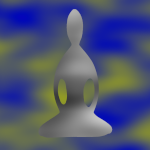Dear Friends,
Gil’s fourth talk on the faculty of samadhi considers the state of the mind “when we are fully present, fully engaged in what’s happening.”
https://www.audiodharma.org/talks/11153
He talks about some of the more refined states of concentration, often called ‘absorption’ – although he clarifies that this state is not one where we are losing ourselves in the experience. He says there is greater clarity of attention, a brightness, an undistracted presence.
He contrasts what is not happening with what begins to happen.
The mind is not busy, active, thinking, perpetuating itself. We have a break from rumination, stories, criticism, feelings of discontent, irritation, boredom.
As the mind becomes more quiet and clear, feelings of contentment can arise. There’s a gladness that the mind isn’t presently afflicted by these hindrances. It’s such a relief.
Gil also suggests “as we get more concentrated, settled, and unified — there is a deeper sense of goodness and well-being that has a chance to bubble up.” This isn’t something we do, but rather we create the clearing.
Admittedly, some of what bubbles up can be a “purification process”:
Some of what has been buried deep inside — grief, anger, and sorrow for example — needs to come out and have its time in the sun of awareness in order to empty out. We have to learn that process, be patient with it — hopefully not to add afflictive thoughts on top of it — but just feel inspired that it’s so good to have this stuff finally come out, so that it can dissipate, resolve itself, heal itself.
Gil makes it sound easy, but in my experience, having a trusted teacher or therapist to help work through tougher parts of this purification process is very helpful.
Goodness, gladness, well-being can flow up – a quiet joy.
Towards the end of the talk, Gil relates this sense of getting really settled to petting a (friendly) cat. Gently stroking, the cat starts to purr. Likewise, we can gently “stroke” the breathing (or other anchor) with awareness, and our body, heart, mind system can begin to “purr” in its own way.
“This recognition of goodness, pleasure, what feels beautiful, or feels ‘purringful’ is part of what supports samādhi practice. Without expectation, without demand, without striving, but being open to start feeling the goodness, the well-being that comes when we settle”.
Quotation:
I came across this quotation for Tulku Thondup, a Tibetean monk. This brings out some of the same points that Gil mentioned – that a mind that is not wrapped up in self-criticism can be joyful. And this quote reminds us that was can “prime the pump” of joy by reflecting on any goodness.
Rejoicing magnifies the beneficial effects of meditation. When we are self-critical—thinking, say, that our meditation was too short or not good enough—we take away from its power to help us. Instead, we should rejoice over the blessing energies of joy that free us from our mental tightness, confinement, conflicts, and clashes, and open us to the experience of a new dawn of peace, joy, and confidence. We can actually meditate on rejoicing over any wholesome action, thought, or experience to strengthen its benefits.
Tulku Thondup, from The Hear of Unconditional Love
https://www.tulkuthondup.com/blog/rejoicing
Meditation:
Jill Shepherd has a guided meditation, “Inviting the knowing of pleasant bodily sensations to uplift the heart-mind into appreciation or even joy, which might settle into tranquility then samādhi” (45 minutes, but there are only instructions in the first 13 minutes, so feel free to set a timer if you wish to do a shorter practice):
https://www.dharmaseed.org/talks/70365/
With good wishes,
Andrea

